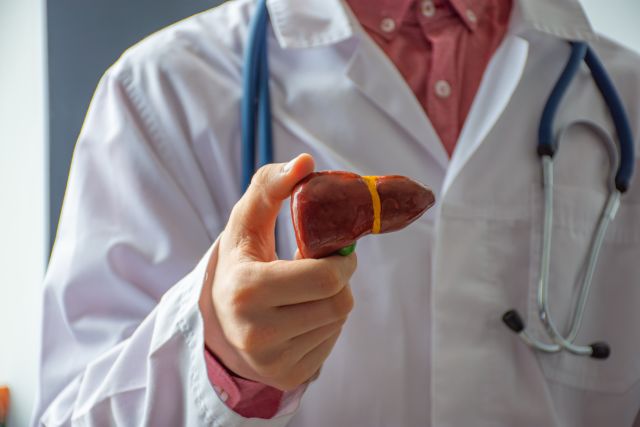Updated on June 27, 2024.
Your liver is the second largest organ in your body, after the skin. It’s found just below your ribs on the upper right side of your abdomen and plays a vital role in your overall health and wellness.
Your liver processes and stores nutrients from the food you eat, including sugar, fat, and protein. Once processed, it helps to deliver those nutrients throughout your body. It also produces bile, which helps your gastrointestinal (GI) system digest food and absorb fats and remove waste.
The liver also serves a valuable purpose by helping to cleanse your body. It does this by converting toxins and medications into harmless substances.
What is cirrhosis?
A number of factors may contribute to liver disease. One such chronic liver disease is cirrhosis.
Cirrhosis is a condition that leads to liver damage and scarring, causing the liver to lose its ability to function properly. It's known as a progressive condition, which means it gets worse over time. The most common causes of cirrhosis are:
- Alcoholism
- Fatty liver disease (a buildup of fat in the liver, particularly in those who have overweight, obesity, or dieabetes)
- Hepatitis B and C
Other factors that can contribute to cirrhosis include:
- Iron buildup caused by a genetic predisposition
- Buildup of bile in the liver as a result of other conditions such as bile duct problems
- Autoimmune disease
- Chronic heart failure
As the liver deteriorates, liver cells die off. In an effort to heal itself, the liver generates scar tissue to take the place of lost cells. This process is known as fibrosis.
Cirrhosis occurs when the majority of the liver is scarred and becomes stiff, rendering it ineffective in producing the proper nutrients and cleansing toxins from your body. While the liver is capable of some self-regeneration, the kind of extensive damage that happens in cirrhosis cannot be undone. It’s important to know the signs of cirrhosis and communicate with a healthcare provider (HCP) to catch and treat it early.
What are the symptoms?
While most people with cirrhosis experience few to no symptoms in the early stages, several common symptoms may arise once the condition progresses. These may include the following:
- Fatigue
- Weakness
- Itching
- Loss of appetite
- Nausea
- Bloating in abdomen
- Swelling in the feet or legs
- Jaundice (a condition marked by a yellow appearance of the skin, whites of the eyes, and mucous membranes)
If you feel that you may be experiencing any of these symptoms, contact your HCP. Screening for cirrhosis can be based on preexisting conditions that increase your risk for it, such as heavy drinking or obesity, along with routine blood or imaging tests. Your HCP may do tests like a complete blood count (CBC), liver function tests, an abdominal CT scan, or a liver biopsy when necessary. Depending on the severity of your condition, early diagnosis and treatment is crucial.
What can I do?
While some risk factors for cirrhosis may be out of your control, you can take active steps to lower your risk of developing (or worsening) the condition:
- Stop drinking alcohol. Continuing to drink can cause additional liver damage.
- Work with your HCP to create a healthy diet plan that’s low in salt.
- Work on reaching or maintaining a healthy weight if you have overweight or obesity.
- Get vaccinated for infections such as hepatitis A and B, pneumonia, influenza, and COVID-19.
- Talk to your HCP about all the medicines you’re taking, including supplements, over-the-counter meds, and medications for other conditions. Some prescription medicines and even common over-the-counter medicines may not be safe if you have cirrhosis or may need to be taken at lower doses than usual to be safe.
- At the recommendation of your HCP, take prescription medications to treat underlying causes of cirrhosis such as hepatitis C and autoimmune disease.
Additional treatment options vary depending on the severity and causes of your condition and whether or not complications have already developed. Speak with your HCP frequently and candidly about lifestyle changes and any concerns you may have regarding your health.







